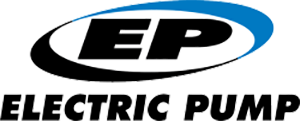Industry Resources
National Water Associations
American Water Works Association
National Rural Water Association
State Associations
Central States Water Environment Association
Iowa Rural Water Association
Illinois Rural Water Association
Illinois Wastewater Association
Illinois Association Water Pollution Control
Iowa American Water Works Association
Iowa Water Environment Association
Iowa Onsite Waste Water Association
Iowa Well Water Association
Minnesota Water Operators Association
Minnesota Rural Water Association
Minnesota Pollution Control Association
Minnesota American Water Works Association
Nebraska Water Environment Association
Nebraska Rural Water Association
North Dakota Rural Water Association
Southern Iowa Rural Water Association
South Dakota Rural Water Association
South Dakota Water & Wastewater Association
Wisconsin Rural Water Association
Wisconsin Waste Water Operators Association
U.S. Environmental Protection Agency
Frequently Used Terminology
activated sludge: sludge particles produced by the growth of microorganisms in aerated tanks as a part of the activated sludge process to treat wastewater
aeration: exposing to circulating air; adds oxygen to the wastewater and allows other gases trapped in the wastewater to escape (the first step in secondary treatment via activated sludge process)
biosolids processing: sludge that is intended for beneficial use. Biosolids must meet certain governmentspecified criteria depending on its use (e.g., fertilizer or soil amendment).
effluent: treated wastewater, flowing from a lagoon, tank, treatment process, or treatment plant
grit removal: a chamber or tank used in primary treatment where wastewater slows down and heavy, large solids (grit) settle out and are removed
influent: wastewater flowing into a treatment plant
lagoons (oxidation ponds or stabilization ponds): a wastewater treatment method that uses ponds to treat wastewater. Algae grow within the lagoons and utilize sunlight to produce oxygen, which is in turn used by microorganisms in the lagoon to break down organic material in the wastewater. Wastewater solids settle in the lagoon, resulting in effluent that is relatively well treated, although it does contain algae
municipal: of or relating to a municipality (city, town, etc.). Municipal wastewater is primarily domestic wastewater.
primary treatment equipment: the first stage of wastewater treatment that removes settleable or floating solids only; generally removes 40% of the suspended solids and 30-40% of the BOD in the wastewater
secondary treatment equipment: a type of wastewater treatment used to convert dissolved and suspended pollutants into a form that can be removed, producing a relatively highly treated effluent. Secondary treatment normally utilizes biological treatment processes (activated sludge, trickling filters, etc.) followed by settling tanks and will remove approximately 85% of the BOD and TSS in wastewater. Secondary treatment for municipal wastewater is the minimum level of treatment required by the Clean Water Act.
sedimentation: the process used in both primary and secondary wastewater treatment, that takes place when gravity pulls particles to the bottom of a tank (also called settling).
settling tank (sedimentation tank or clarifier): a vessel in which solids settle out of water by gravity during wastewater or drinking water treatment processes.
sludge: any solid, semisolid, or liquid waste that settles to the bottom of sedimentation tanks (in wastewater treatment plants or drinking water treatment plants) or septic tanks
tertiary treatment: any level of treatment beyond secondary treatment, which could include filtration, nutrient removal (removal of nitrogen and phosphorus) and removal of toxic chemicals or metals; also called “advanced treatment” when nutrient removal is included
total suspended solids (TSS): a laboratory measurement of the quantity of suspended solids present in wastewater that is one of the main indicators of the quantity of pollutants present
trickling filter process: a biological treatment process that uses coarse media (usually rock or plastic) contained in a tank that serves as a surface on which microbiological growth occurs. Wastewater trickles over the media and microorganisms remove the pollutants (BOD and TSS). Trickling filters are followed by settling tanks to remove microorganisms that wash off or pass through the trickling filter media.
turbidity: the cloudy or muddy appearance of a naturally clear liquid caused by the suspension of particulate matter
wastewater: water that has been used for domestic or industrial purposes
